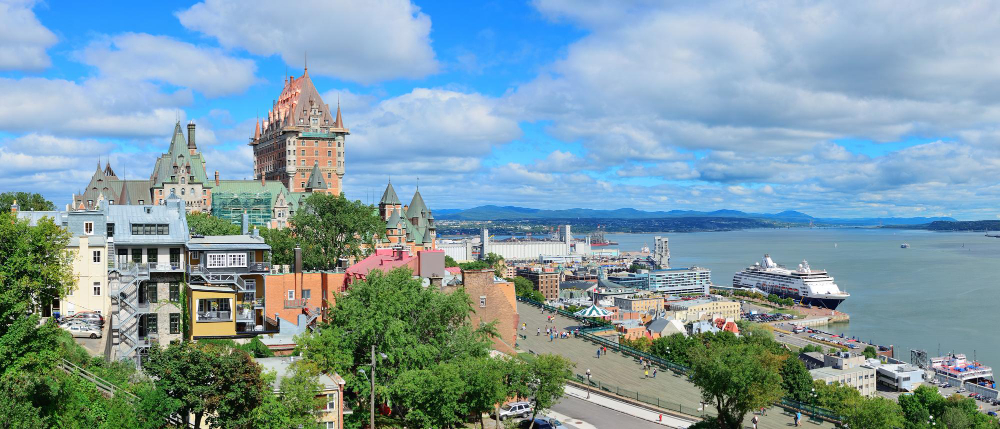
Travel Northern Quebec Without Going Broke
Traveling through Northern Quebec offers a glimpse into one of Canada’s most fascinating and untouched regions. With expansive boreal forests, rugged mountains, Inuit and Cree communities, and massive lakes and rivers, it’s a dream destination for travelers seeking adventure, cultural immersion, and the raw beauty of the north. However, the region’s remoteness can make it seem like an expensive proposition for budget-conscious explorers.
The good news? With proper planning and smart choices, you can experience the magic of Northern Quebec without draining your savings. From remote villages and nature reserves to indigenous cultural experiences and provincial parks, there’s a surprising range of affordable and enriching activities. This guide will walk you through where to go, what to do, and how to travel between places while sticking to a modest budget.
About Northern Quebec
Northern Quebec spans a vast and sparsely populated area covering more than half of the province. Known for its First Nations communities, Arctic tundra, and impressive wildlife, the region is divided into territories such as Nunavik and Jamésie. Historically, it has been home to the Inuit and Cree peoples and remains rich in cultural heritage and natural resources. In recent years, more independent travelers have been drawn to its remote charm and ecological significance.
Where to Go in Northern Quebec
From remote Arctic villages to forested river valleys, there are many unforgettable destinations across the north. Here are several places that offer depth, scenery, and accessibility without high costs.
- Visit Kuujjuaq, the largest village in Nunavik, for cultural festivals, river paddling, and community-hosted events.
- Explore Chibougamau and its surrounding lakes for camping, hiking, and spotting northern lights.
- Travel to Waskaganish, a Cree village near James Bay, for immersive Indigenous culture and guided walking tours.
- Head to Parc National des Grands-Jardins near La Baie for mountain trails, boreal landscapes, and budget-friendly yurts.
- Base yourself in La Grande-Rivière for scenic road trips, hydroelectric tours, and affordable lodging.
- Stop in Radisson, one of the northernmost road-accessible towns in Quebec, offering budget motels and river tours.
- Plan a day trip to Oujé-Bougoumou for eco-museums and traditional Cree cultural experiences.
What to Do in Northern Quebec
This region offers rare access to Indigenous culture, pristine nature, and unique outdoor activities. Budget travelers can take part in meaningful experiences that won’t cost a fortune.
- Join a community cultural tour in a Cree or Inuit village for under CAD $20–$40.
- Camp in designated wild areas or use low-cost ZEC zones (controlled harvesting zones).
- Fish, canoe, or hike in provincial parks with minimal permit costs.
- Attend local festivals, powwows, or craft markets open to visitors year-round.
- Spot caribou, foxes, and migrating birds in natural reserves and marshlands.
- Explore hydroelectric plants like Robert-Bourassa Generating Station on free or donation-based guided tours.
- Visit cultural interpretation centers in towns like Mistissini and Chisasibi.
How to Travel Around Northern Quebec
Though public transportation is limited, it is possible to get around with smart coordination. Here’s how to navigate this remote region without overspending.
- Use Air Inuit and Air Creebec for regional flights—watch for community fare deals.
- Drive the James Bay Road or Route du Nord with a fuel-efficient rental car (and stock up on supplies beforehand).
- Join carpooling groups or online forums where locals offer rides between communities.
- Plan longer stays in fewer destinations to reduce transport costs.
- Coordinate your visit with essential service flights or local delivery runs.
- Download offline navigation tools and maps, especially for areas with no signal.
- Prepare for long distances and carry extra fuel, food, and water when driving remote roads.
Where to Stay on a Budget in Northern Quebec
Options may be fewer than in southern regions, but budget travelers can find unique and affordable stays with a bit of resourcefulness.
- Camp in authorized ZEC or provincial park areas for CAD $15–25 per night.
- Look for dorm-style lodging in community centers or Indigenous-run guesthouses.
- Use regional tourism sites to book local B&Bs and cultural stays in advance.
- Travel with a tent or camper to be more flexible in wilderness areas.
- Ask about free or subsidized lodging if volunteering with community programs.
- Stay in forestry lodges or work camps that open to travelers during off-season.
- Look for discount hotel rates in Chibougamau and Radisson outside of peak season.
Extra Budget Travel Tips for Northern Quebec
Smart planning can make the difference between an expensive trip and an affordable one. Here are some additional money-saving tips for your northern adventure.
- Bring all necessary food and gear—groceries are more expensive in remote areas.
- Use fuel rewards or co-op cards in the north to reduce gas costs.
- Travel in shoulder seasons (May–June, September) for lower rates and fewer crowds.
- Use Indigenous tourism networks to find local guides and authentic low-cost experiences.
- Attend public community events for free cultural programming and meals.
- Be weather-ready—pack waterproof and cold-weather gear to avoid last-minute purchases.
- Respect local customs and territories—following guidelines opens more opportunities to explore.
Final Thoughts
Northern Quebec is unlike any other destination in Canada—wild, welcoming, and deeply rooted in Indigenous heritage. With a bit of extra planning, this remote region can offer you an affordable travel experience rich in nature, culture, and adventure. If you’re willing to go the extra mile (literally), Northern Quebec will reward you with unforgettable memories that cost far less than you’d expect.
